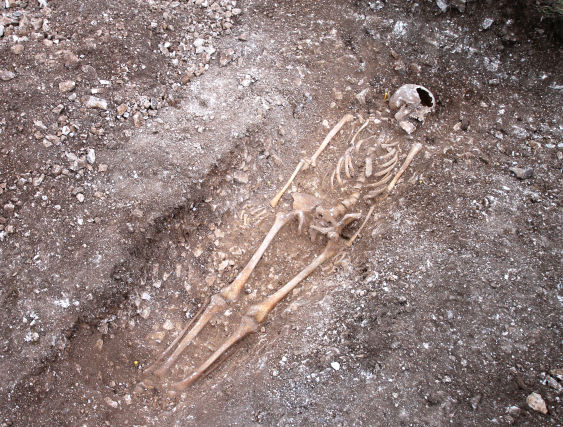During the excavation job for a wind farm, remains of a Man believed to be the victim of an execution that killed 1,000 years ago were discovered.

During a dig in preparing for the Rampion Offshore Wind Farm, archeologists discovered the adult guy, aged between 25 and 35, with deadly cut marks on his throat.
The skeleton was recovered intact with the exception of a few small bones missing from the hands and feet.
He was laid facing upwards with his arms at his side in an East-West alignment, with no sign of a coffin.

A vertebrae from the skeleton
The remains were found during surveying work for the route for onshore cabling on the South Downs at Truleigh Hill, north of Shoreham-by-Sea, West Sussex
Jim Stevenson, project manager for Archaeology South East, said:
“Specialist osteological assessment and radiocarbon dating have revealed that the skeleton is most likely to be an execution burial of the later Anglo Saxon period of around 1010 to 1025 AD.
“Most significantly, two cut marks made by a sharp blade or knife were found at the mid-length of the neck, which would have proved fatal for the individual.”

The skeleton was found during work for a wind farm
The isolated burial was found along the ancient route of the South Downs Way in an area of known prehistoric graves recorded in the West Sussex Historic Environment Record.
It is believed some were once identifiable as visible surface burial mounds, were excavated in the 18th and 19th centuries and sometimes coincide with isolated burials.
The Rampion Offshore Wind Farm, 13km off the Sussex coast, is due to be fully operational later this year.
Once complete, it will provide enough electricity to supply almost 347,000 homes a year, equivalent to about half the homes in Sussex





